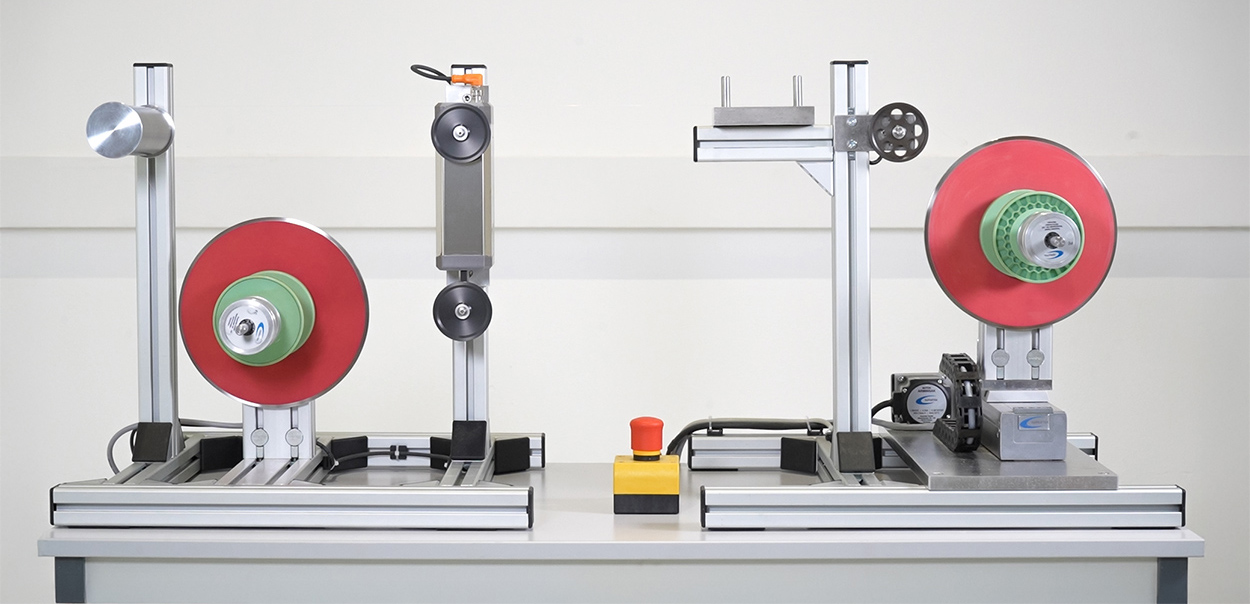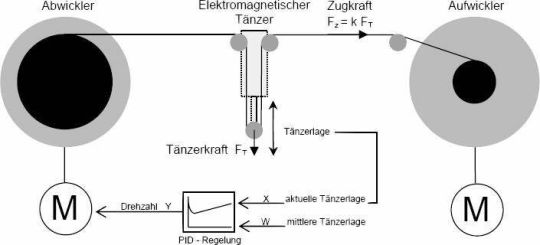Winding Machine
A winding machine is a device used to wind flexible materials such as threads, wires, fibers, films or tapes evenly and in a controlled manner onto spools, drums or other carriers. It is widely used in various industries, including textiles, cable, wire and fiber optics.
Function
The basic principle of a winding machine is to apply a continuous material onto a core with defined tension, speed and winding geometry. A distinction is made between:
-
Winding: transferring the material from a source onto a spool.
-
Rewinding: transferring the material from one spool to another while changing the winding structure.
Modern machines are equipped with precise drives, sensors, and control systems that ensure uniform winding and allow adaptation to different materials.

Winding Machine – Functional Principle
The illustration shows the functional principle of a winding machine equipped with a dancer control system for maintaining constant web tension. The material is unwound from the left spool (unwinder) and wound onto the right spool (winder). An electromagnetic dancer compensates for tension fluctuations by moving vertically according to the web tension.
The dancer position is measured and fed into a PID control loop, which adjusts the motor speed of the unwinder to keep the dancer in its nominal position. This ensures a stable tension force (Fₜ) and a consistent winding quality, even with varying spool diameters or changing winding speeds.

Types
Different designs of winding machines are available depending on the material and application:
-
Parallel winding: the material is laid side by side in parallel.
-
Cross winding: the material overlaps at a defined angle to create a stable winding pattern.
-
Spool and drum winders: using different carriers depending on the intended use.
-
High-speed winders: designed for production speeds of several hundred up to more than a thousand meters per minute, for example in fiber optic manufacturing.
Applications
Winding machines are used in a wide range of industries:
-
Textile industry: winding yarns and fibers.
-
Electrical engineering: winding cables, wires and coils for transformers and motors.
-
Fiber optics and composites: winding sensitive fibers at high speeds.
-
Film and paper industry: winding large-format rolls.
Control and Automation
Modern winding machines are equipped with programmable logic controllers (PLC), servo drives and automated tension control. This allows precise adjustment to material properties, higher production speeds and reduced material waste.
Winding machines are a key element of modern production processes, as they ensure material flow and enable further processing. In high-tech industries, such as fiber optics or specialty wire production, they play a decisive role in product quality and cost efficiency.